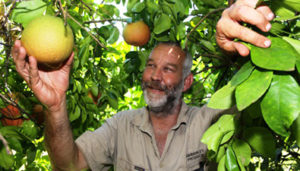Read the latest information on
Foot-and-mouth disease
 Lachlan Dobson, a fruit grower farming in the Ord River Irrigation Area of Kununurra, Western Australia, was the 2010 Biosecurity Farmer of the Year – plant category.
Lachlan Dobson, a fruit grower farming in the Ord River Irrigation Area of Kununurra, Western Australia, was the 2010 Biosecurity Farmer of the Year – plant category.
With Timor only 500 kilometres off the coast, exotic pests were an ever-present threat to Lachlan’s 120,000 mango trees and 80,000 red flesh grapefruit trees.
To combat the threat he implemented a rigorous and integrated regime that saw biosecurity paramount on his farm – Kimberly Produce.
Biosecurity can be summed up as the measures taken to exclude, manage and eradicate unwanted biological pests and diseases.
Plant Health Australia Executive Director and CEO, Greg Fraser, congratulated Lachlan on his commitment to biosecurity.
“Each day, farmers in northern Australia face the chance of pest and disease incursions. Lachlan is leading the way in demonstrating how best-practice biosecurity measures, such as undertaking regular surveillance, controlling people and product movement onto and around the property, promoting good hygiene through all parts of the farm operation, and implementing educational induction programs for staff members, can assure the long-term viability of primary production in this region.”